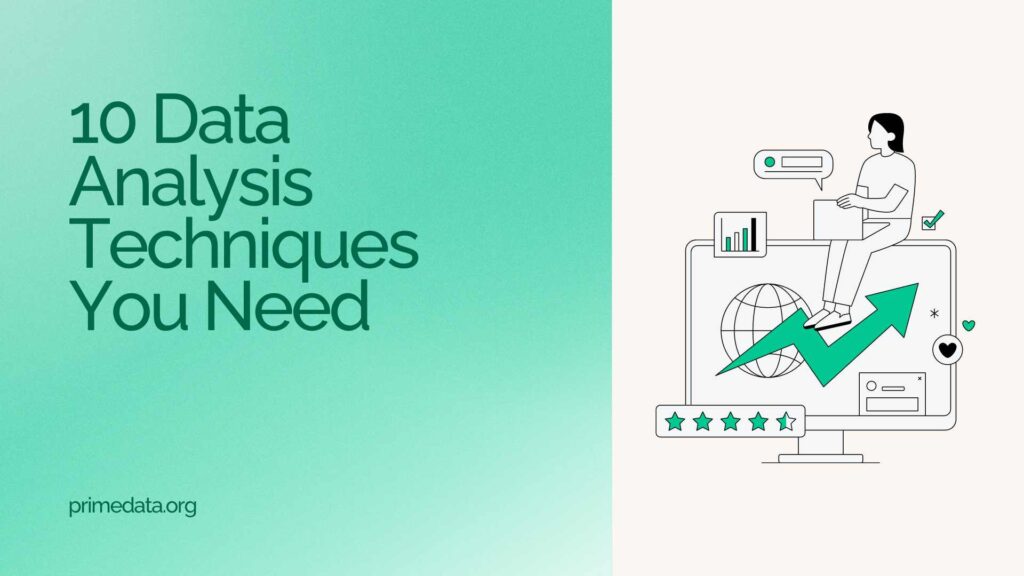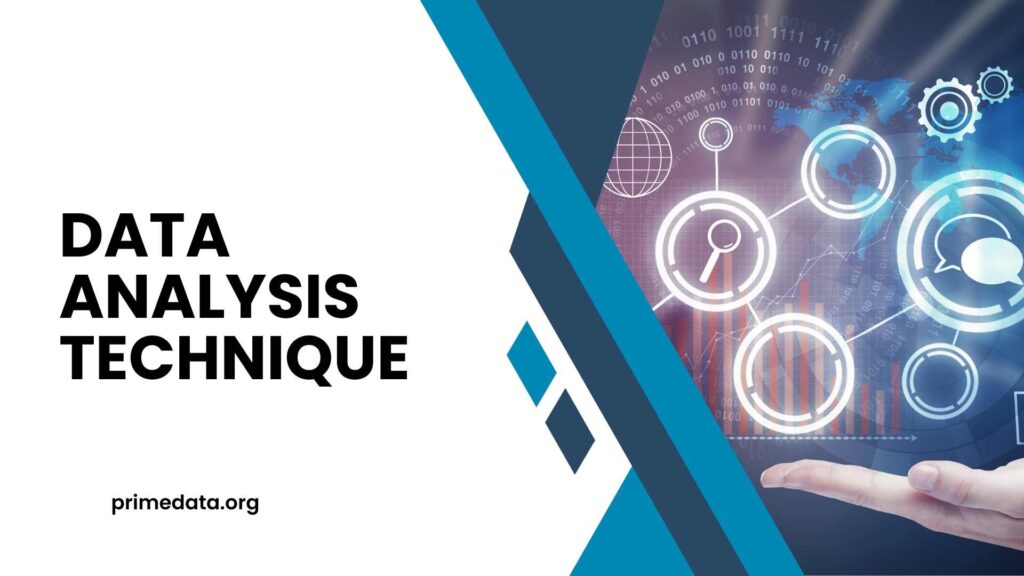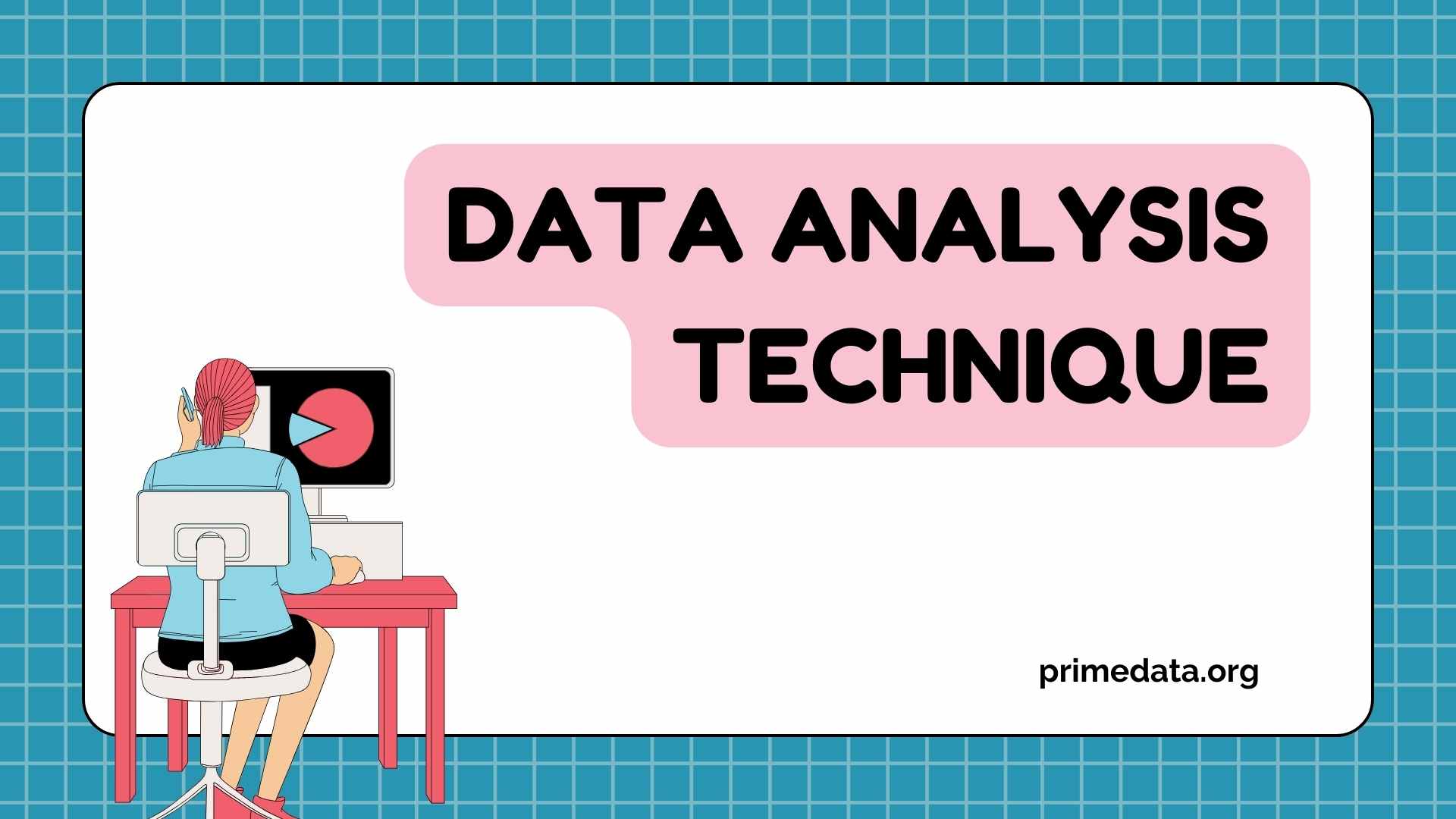Discover the top 10 data analysis techniques to navigate the complex world of data analytics and primedata, making it accessible for everyone.
Diving Into Data Analysis
Imagine yourself as a detective working in a massive digital metropolis where every bit of information could be missing. What is your array of tools? Examination of data. Analyzing raw data for patterns, questions, and decision-making is the goal of this art and science. There needs to be more than just looking at numbers; you also need to know what story they reveal.
10 Data Analysis Techniques You Need
Nowadays, data is worth more than gold, so it’s crucial to know how to extract useful information from it. Whether your goal is to improve your academic research, optimize your company strategy, or satisfy your curiosity about the inner workings of the digital world, learning data analysis techniques is essential. Rest assured! The beginning does not necessitate mathematical prowess. Come along as we explore the intriguing realm of data analysis using precise language, exciting parallels, and a dash of humor to make things entertaining.

The Power of Descriptive Statistics
Before decoding any challenges, you must first understand the nature of the situation. Descriptive statistics illuminate the characteristics and magnitude of your data set. The statistics provide a concise and structured overview of data, facilitating quick comprehension. Consider being at a party and wanting to determine the average age of the guests or the most popular music genre. Descriptive statistics provide an overview without delving into each specific element.
Predicting the Future with Inferential Statistics
Inferential statistics involves predicting outcomes beyond what is directly observed, akin to peering into a crystal ball. This technique enables you to infer information about a more significant population from a subset of data. It’s akin to forecasting the result of an election through a survey. By analyzing the trends and patterns in your sample, you may predict potential outcomes on a broader scale.
Unraveling Relationships Through Regression Analysis
Regression analysis is a tool that helps navigate the connection between several variables—Are you interested in determining the correlation between advertising expenditure and sales expansion? Regression analysis involves plotting data points and fitting the best line to discover correlations. It consists of following a tale’s interconnected aspects to understand how they impact each other.
Data Mining Adventure
Data mining is likened to the Indiana Jones of data analysis. The task involves delving into extensive databases to uncover concealed patterns, unfamiliar linkages, and other significant insights. This strategy is akin to excavating an ancient ruin in search of concealed gems. You can reveal hidden truths inside your data by utilizing appropriate tools and a touch of fortune.
Machine Learning’s Enchantment
Machine Learning is a cutting-edge form of data processing. Consider training your computer to identify patterns and autonomously judge based on previous encounters. It’s like having an intelligent robotic companion that enhances its capabilities with each task it solves. This technique is revolutionizing our approach to data analysis, enabling us to forecast customer behavior and diagnose diseases.
Simplifying Complexity using PCA
PCA is a valuable tool for dealing with large amounts of data. It decreases the number of variables in your data, removing irrelevant information to concentrate on the most critical aspects. Consider preparing for a global journey with just one piece of luggage. PCA assists in selecting the fundamental elements, guaranteeing that you own the necessary items without any unnecessary extras.
Creating Family Groups Using Cluster Analysis
Cluster analysis aims to identify inherent patterns or groupings within a dataset. This strategy involves categorizing data points into groups based on their similarities, allowing for a clearer understanding of the overall pattern, much like organizing an extensive library of books by genre. It is a method to comprehend the structure of your facts by pinpointing distinct groups within the disorder.
Understanding Cloud Computing: A Comprehensive Guide for Beginners
Observing the Passage of Time via Time Series Analysis
Time Series Analysis allows you to study how data evolves. It involves documenting data related to the stock market, weather patterns, or client purchases to identify trends, cycles, and seasonal fluctuations. This method enables you to predict future trends by analyzing previous patterns, providing you with a predictive advantage on upcoming events.
Analyzing Texts with Text Analytics
Text analytics serves as your decoder ring in a world filled with words. This approach analyzes text data from social media posts and customer reviews to extract valuable insights. It’s akin to studying a novel to reveal the underlying ideas, emotions, and narratives embedded in the text.
Creating visual representations using data visualization
Data visualization transforms intricate datasets into clear and understandable graphics. This technique transforms numerical data into visual narratives through a basic bar chart or an interactive map. It’s the distinction between describing a stunning sunset and presenting a photograph. Visualization enables data to be understood by individuals of all levels of experience.

Effective Data Analysis Strategies
To ensure the efficacy of data analysis inside an organization, the following measures should be put into practice:
- Foster a Data-Driven Culture: Promote a culture that values data literacy at all levels of the organization. Promote curiosity and the utilization of data in everyday decision-making.
- Invest in technology: choosing and investing in the appropriate tools and technologies that simplify data analysis. This encompasses software for gathering, analyzing, displaying, and explaining data.
- Maintain Data Quality: Ensure data quality by using strict data management practices to guarantee the accuracy, completeness, and dependability of the data under analysis. This requires routine audits and cleansing of data sources.
The Importance of Data Visualization
Data visualization is essential for transforming intricate statistics into easily understandable and practical insights. Efficient visualization helps to detect trends, patterns, and anomalies that may not be apparent in the original data. Tools like Tableau, Power BI, and Google Data Studio help improve comprehension and support well-informed decision-making.
Unleashing Sora AI: Redefining Video Creation
Final Thoughts
Mastering data analysis involves strategically utilizing knowledge of techniques and procedures to extract meaningful insights that can drive an organization’s progress. Businesses must effectively analyze, evaluate, and use data to stand out as leaders in the competitive market during significant data expansion.
Data analysis may revolutionize decision-making, improve operational efficiency, and reveal new growth and innovation prospects. Having the appropriate mentality, tools, and methods is crucial for achieving substantial competitive benefits and enduring success in the field of data analysis.
FAQs:
Can I apply these techniques without a background in statistics?
While a basic understanding of statistics is helpful, many resources and software tools can guide beginners through the process.
Which software tools should I start with?
Excel is a great starting point for beginners, but as you advance, consider learning R or Python for more sophisticated analysis and Tableau for data visualization.
How do I know which technique to use?
The choice depends on your data and objectives. Start with descriptive statistics to understand your data, then move on to more complex techniques as needed.
Is data analysis only for big companies?
No Businesses of all sizes and individuals can benefit from understanding data analysis to make better decisions.
How can I improve my data analysis skills?
Practice, practice, practice. Work on real-world datasets, take online courses, and stay curious. The world of data is vast and ever-changing, so there’s always something new to learn.
